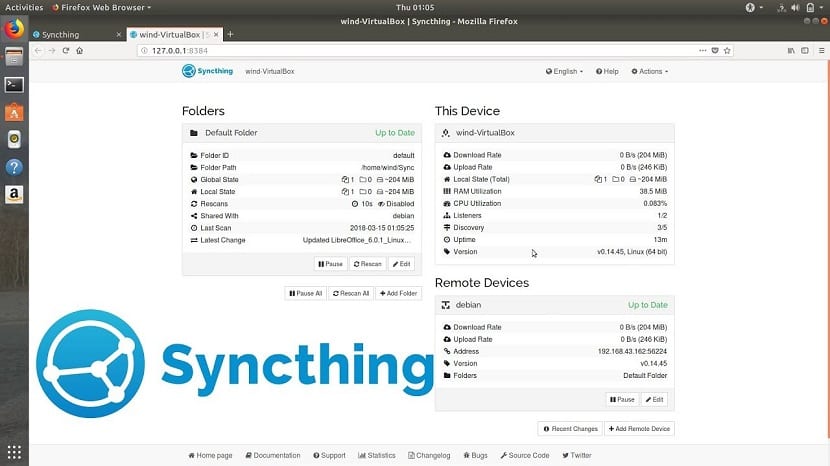
A version of the Syncthing 1.2.0 automatic file synchronization system has just been introduced, in which the synchronized data is not uploaded to cloud warehouses, but is replicated directly between user systems when simultaneously appearing online using the block exchange protocol developed by the project.
Syncthing code is written in the Go language and is distributed under the free license from MPL. Finished builds are ready for Linux, Android, Windows, macOS, FreeBSD, Dragonfly BSD, NetBSD, OpenBSD, and Solaris.
In addition to solving data synchronization problems between multiple single-user devices, using Syncthing it is possible to create large decentralized networks to store shared data, that are distributed among the member systems.
About Syncthing
Flexible access controls and sync exceptions are provided. It is possible to define hosts that will only receive data, that is, data changes on these hosts will not affect data instances stored on other systems.
When synchronizing with a new device, if there are identical blocks on several devices, the blocks are copied from different nodes, by analogy with the operation of the BitTorrent system.
The more devices involved in syncing, the faster the replication of new data due to parallelization.
In the process of synchronizing modified files, only the modified data blocks are transferred over the network, and when the name is changed or the access rights are changed, only the metadata is synchronized.

Data channels are formed using TLS, all nodes authenticate each other using certificates and device identifiers, SHA-256 is used for integrity checking.
To determine the synchronization nodes on the local network, the UPnP protocol can be used, which does not require manual entry of the IP addresses of the devices that are synchronizing.
For system configuration and monitoring, a built-in web interface is provided, a CLI client, and a Syncthing-GTK GUI, which also provides tools for managing sync nodes and repositories.
To simplify the search for Syncthing nodes, a node discovery coordination server is being developed, for which a prepared Docker image has been prepared.
Syncthing 1.2.0 Main New Features
In this new version of Syncthing 1.2.0 a new transport protocol based on QUIC has been introduced (fast UDP internet connections) with additions for forwarding via address translation (NAT). TCP is still the preferred protocol for establishing connections.
In addition, the improvement in the handling of fatal errors is highlighted and tools have been added to automatically send problem reports to developers. Report submission is enabled by default.
On the other hand a special option has been added to disable it in settings. It is noted that the data in the crash report does not include file names, registry data, device identifiers, statistics and other personal data.
The use of small and fixed blocks (128 KiB) has been declared obsolete; now only large resizable blocks are used to index and transfer file contents.
The interface provides the display of the last connection error for each of the specified addresses. In WebUI, the layout of the table columns is optimized for correct display on narrow screens.
How to install Syncthing 1.2.0?
For those who are interested in being able to install this application on their system, they must open a terminal and in it type the following command
sudo apt-get install apt-transport-https curl -s https://syncthing.net/release-key.txt | sudo apt-key add -
Done this now, we will add the stable repository of the application to our system with:
echo "deb https://apt.syncthing.net/ syncthing stable" | sudo tee /etc/apt/sources.list.d/syncthing.list
Finally we can install it with:
sudo apt-get update sudo apt-get install syncthing
Syncthing is also available for mobile devices, so the download of the application can be done in the following link from the PlayStore.